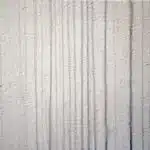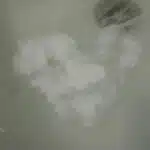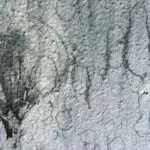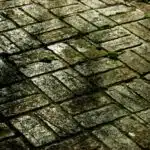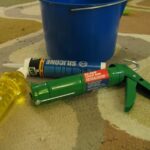Maintaining a clean and organized home is essential for a healthy and peaceful living. Walls, being the most prominent feature of any room, require regular cleaning to maintain their pristine appearance. However, cleaning walls can be challenging, especially when it comes to preventing damage to the paint. Using harsh chemicals or abrasive tools can cause scratches, discoloration, or peeling of the paint surface.
As a professional house cleaner/ home care specialist, I understand the importance of having a clean and well-maintained home. In this article, I will share some effective techniques and tips on how to clean walls without damaging your paint. Whether you are dealing with stubborn stains or just want to freshen up your walls’ look, these methods will help you achieve a spotless finish without compromising on the quality of your paint job. So let’s dive in and learn how to keep those walls looking as good as new!
Gather Your Supplies
Cleaning walls is an essential part of maintaining a clean home. However, the process can be challenging, especially if you’re not sure how to go about it without damaging your paint. Before you begin, gather all the necessary supplies that will make your cleaning process easier and more effective.
Cleaning solutions are crucial when it comes to cleaning walls. You’ll need a mild cleaner that’s safe for your paint and won’t leave any residue behind. Avoid using abrasive or acidic cleaners as they can damage your paint and ruin the overall look of your walls. Instead, opt for a gentle solution like warm water mixed with dish soap or vinegar.
Safety precautions are also critical when cleaning walls. Make sure you wear gloves and protective eyewear to avoid any accidents while handling the cleaning solutions. Additionally, ensure that you test the cleaner on an inconspicuous area first before applying it to the entire wall surface. This way, you can determine whether it’s safe for use on your specific type of paint.
Now that you have gathered all the necessary supplies and taken safety precautions, it’s time to start cleaning! But before doing so, make sure to dust and vacuum the walls to remove any loose dirt or debris that might get in the way of deep cleaning.
Dusting And Vacuuming
Dusting and Vacuuming are essential steps in the process of cleaning walls without damaging your paint. Regular dusting can help prevent accumulation of dirt and debris on your walls, which can lead to discoloration over time. It also helps improve air quality by removing allergens from the surfaces.
When it comes to vacuuming, it is important to choose the appropriate technique for different types of walls. For flat painted walls, use a soft-bristled brush attachment and gently run it over the surface. For textured or wallpapered walls, use a vacuum with a soft brush attachment to avoid scratching or damaging the surface. Avoid using high suction settings on any type of wall as this can cause damage.
Following these techniques can help maintain the cleanliness and appearance of your walls for longer periods while also saving you money in pricey repairs due to damage caused by improper cleaning methods. In addition, proper dusting and vacuuming can contribute to a healthy living environment by minimizing allergens present in your home’s air supply.
Transition: Understanding how to properly dust and vacuum your walls is just one step in maintaining their appearance and longevity. When dealing with stubborn stains or dirt buildup, spot cleaning with mild soap and water may be necessary.
Spot Cleaning With Mild Soap And Water
- To begin spot cleaning with mild soap and water, it is important to mix the soap with warm water in a bucket.
- The ratio of soap to water should be 1 part soap to 4 parts water, ensuring that the soap solution is not overly concentrated.
- Before applying the soap solution to the wall, it is best to test a small area first to ensure that the paint is not damaged by the soap.
- When applying the soap to the wall, use a soft cloth and gently apply the solution in a circular motion to remove the stain.
Mixing The Soap
When it comes to cleaning walls, using mild soap and water is an effective method that is gentle on your paint. However, one of the most common mistakes people make is not properly mixing the soap solution. This can lead to unsightly streaks or even damage to the paint. As a professional house cleaner/home care specialist, I recommend taking the time to mix the soap properly in order to achieve the best results.
Choosing the right soap for cleaning your walls is essential. You want a mild soap that won’t be too harsh on your paint but will still effectively remove dirt and grime. Look for a pH-neutral soap that is gentle and non-abrasive. Once you’ve chosen the right soap, it’s important to mix it with water in proper proportion. Too much soap can leave residue on your walls while too little won’t be effective at cleaning.
To mix the solution, add a small amount of soap to warm water and stir until it dissolves completely. The exact proportion will depend on how dirty your walls are, but generally speaking, 1 tablespoon of soap per gallon of water should suffice. Remember not to use hot water as this could also damage your paint. With a properly mixed solution and some elbow grease, you’ll be able to clean your walls without causing any harm to them.
Applying The Soap
After mixing the soap solution in proper proportion, it’s time to apply it on the walls. Knowing how to properly dilute soap is just one part of the equation for effective wall cleaning. It’s equally important to use a soft brush when applying soap. This will help prevent any damage to your paint or wallpaper.
When it comes to applying soap, start at the top of the wall and work your way down. This will prevent any streaks from forming as you clean. Dip your soft brush into the soapy water and gently scrub the surface of your walls, being careful not to press too hard or use rough scrubbing pads that can scratch your paint.
After scrubbing, rinse with clean water using a damp sponge or cloth until all soap residue is removed. Then dry with a clean towel or cloth. Remember that spot cleaning with mild soap and water is only recommended for small areas where dirt or stains are visible. For larger surfaces, I recommend hiring a professional house cleaner/home care specialist to ensure that your walls are thoroughly cleaned without causing any damage.
Removing Grease And Grime With Vinegar Solution
Have you ever noticed stubborn grease and grime stains on your walls that seem impossible to remove? Fear not, as there is a simple and effective solution: vinegar. Vinegar is a natural cleaning agent that has been used for centuries due to its cleaning properties. It is safe to use on most surfaces, including painted walls, without damaging the paint.
The benefits of using vinegar for removing grease and grime are numerous. Firstly, it is an eco-friendly cleaning solution as it does not contain harmful chemicals that can harm the environment or your health. Secondly, it is an affordable option compared to other commercial cleaning products. Finally, vinegar has antimicrobial properties that can help kill bacteria and viruses present on your walls.
Compared to other cleaning solutions, vinegar stands out as the best option for removing grease and grime from painted walls. Other commercial cleaners often contain harsh chemicals that can strip away the paint or leave behind residue, which can attract more dirt in the future. Vinegar leaves no residue behind and effectively cleans the surface without damaging it. Therefore, next time you encounter stubborn stains on your wall, reach for a bottle of vinegar instead of harsh chemical cleaners.
As we move onto erasing scuffs and marks with magic eraser in our next section, remember that prevention is always better than cure when it comes to keeping your walls clean. Regularly wiping down your walls with a damp cloth or sponge can prevent the buildup of dirt and grime over time. However, if scuffs or marks do appear on your painted walls despite preventative measures taken, using a magic eraser might be just what you need to restore them to their former glory.
Erasing Scuffs And Marks With Magic Eraser
- Erasing scuffs and marks from walls is an important part of home care and can often be accomplished using a Magic Eraser.
- It is important to clean walls without damaging the paint, which can be achieved by using gentle pressure and a soft cloth or brush, along with mild soap and water, rubbing alcohol, or detergent.
- For stubborn stains, white vinegar, baking soda, and detergent can also be used.
- Care should be taken when cleaning walls with wallpaper, as water damage can occur if too much water is used.
Erasing Scuffs
Scuffs on walls are a common issue in households, and they can be quite unsightly. It is important to keep your walls clean to maintain the overall appearance of your home. Using erasers for wall cleaning has become a popular solution for homeowners due to its effectiveness in removing scuffs without damaging paint.
When using magic erasers, it is essential to ensure that they are damp but not soaking wet. Wetting the eraser too much can cause it to break down and leave debris on the wall, which can lead to further damage. Additionally, it is recommended to test a small area of the wall first before proceeding with cleaning the entire surface.
Preventing scuffs on walls is also crucial in maintaining their cleanliness. One way to do this is by placing furniture pads or bumpers behind your furniture items such as chairs and tables. This will prevent them from scratching against the walls when moved around. Another tip is to use washable markers instead of regular ones when writing on walls or making notes, as these are less likely to leave permanent marks.
In conclusion, using magic erasers for wall cleaning is an effective way of removing scuffs without damaging paint if used correctly. Alongside this, preventing scuffs on walls through simple measures such as furniture pads and washable markers can help maintain their cleanliness and appearance in the long run.
Magic Eraser
Maintaining the cleanliness of our walls is an essential aspect of home care. Erasing scuffs and marks on them can be quite challenging, especially without the proper tools and techniques. One solution that has become popular among homeowners is using magic erasers for wall cleaning. Besides removing scuffs, these erasers can also be used for other cleaning tasks around the house, such as removing soap scum in the bathroom or grime on stove tops.
While magic erasers are effective in removing scuffs, there are alternatives to consider when it comes to cleaning walls. For example, a mixture of baking soda and water can also remove scuff marks without damaging paint. Another alternative is using a microfiber cloth with warm water and mild detergent to clean walls gently. It’s essential to test small areas first before proceeding with any cleaning method to avoid further damage.
In conclusion, there are various methods to erase scuffs and marks on walls depending on their severity and type of paint used. While using a magic eraser is an effective solution, alternatives such as baking soda and water or microfiber cloths can also do the job well. Whichever method you choose, it’s crucial always to test a small area first before proceeding with wall cleaning.
Using Baking Soda To Clean Stubborn Stains
After using a magic eraser to remove scuffs and marks from your walls, it’s time to tackle any stubborn stains that may still be present. One effective method for cleaning walls without damaging the paint is by using baking soda.
Benefits of Baking Soda:
- Safe and non-toxic for households with children and pets.
- Affordable and easy to find in most grocery stores.
- Effective at removing tough stains such as grease, crayon marks, and even mildew.
- Can be used on various surfaces including painted walls, tiles, and countertops.
To use baking soda for wall cleaning, mix it with water until it forms a paste. Apply the paste onto the stain with a cloth or sponge, then gently scrub in a circular motion until the stain lifts. Rinse the area with warm water and dry with a clean towel.
Alternatives to Baking Soda for Wall Cleaning: If you don’t have baking soda on hand or would like to try alternative methods for cleaning your walls, consider using vinegar or dish soap mixed with water. Both are safe for painted surfaces and effective at removing dirt and grime.
For small marks such as pencil or pen markings, another option is trying toothpaste. Apply a small amount of toothpaste onto the mark and gently rub with a damp cloth until it disappears. Rinse the area with warm water and dry thoroughly.
By following these tips, you can effectively clean your walls without causing damage to your paint while also creating a safe environment for your household members and pets.
Trying Toothpaste For Small Marks
Using toothpaste as a cleaning agent for small marks on walls is a simple and effective method. Toothpaste has mild abrasives that can remove dirt and grime without damaging the paint. However, toothpaste alternatives such as baking soda or vinegar can also be used to clean walls.
Toothpaste is preferred over other cleaning products because it does not contain harsh chemicals that may cause discoloration or damage to the paint. Additionally, toothpaste has a pleasant smell that leaves your walls smelling fresh and clean. However, it is important to note that toothpaste should only be used for small marks, as using it excessively may lead to discoloration of the paint.
While using toothpaste for cleaning walls is a great option, it’s important to avoid abrasive tools and chemicals when attempting to clean larger areas or more stubborn stains. Abrasive tools such as steel wool or scrubbing brushes can scratch the wall’s surface and damage the paint. Similarly, harsh chemicals can strip off the paint or leave behind unsightly stains. Instead, use a soft cloth or sponge with gentle cleaning solutions such as soap and warm water.
Avoiding Abrasive Tools And Chemicals
Soft cloths are an effective tool for cleaning walls without damaging the paint, as they are non-abrasive and can easily remove dust and dirt. Non-abrasive cleaners are safe to use on painted walls, although vacuum cleaners are also a helpful tool for removing dirt and debris. Mild detergents, vinegar, baking soda, and rubbing alcohol are all common ingredients used in cleaning solutions that can be safely used on walls without damaging the paint. Toothbrushes, toothpaste, oil soap, cornstarch, oatmeal, lemon juice, and distilled water can also be effective for cleaning walls without damaging the paint.
Soft Cloths
When it comes to cleaning walls, one of the most important things to remember is to avoid using abrasive tools and chemicals that can damage your paint. Instead, opt for soft cloths that are gentle on your walls while still being effective at removing dirt and grime. But with so many options available, how do you know which one to choose? In this article, we’ll compare microfiber and cotton cloths and discuss factors to consider when choosing the right soft cloth for cleaning walls.
Microfiber cloths are a popular choice for cleaning walls because they are soft, absorbent, and effective at trapping dust and dirt particles. They also don’t leave lint or residue behind like some other types of cloths. Cotton cloths are another option that can be effective for cleaning walls. However, depending on the type of cotton used, they may not be as absorbent as microfiber cloths.
When choosing the right soft cloth for cleaning walls, there are several factors to consider. First and foremost, make sure the cloth is gentle enough not to damage your paint. Microfiber and cotton both fit this criteria but be sure to check the label if you’re unsure. Also consider the size of the cloth – a larger cloth will cover more surface area but may be more difficult to maneuver in tight spaces. Finally, think about how often you plan on washing your cloth – microfiber tends to hold up better than cotton after multiple washes.
In conclusion, using a soft cloth is essential when cleaning walls without damaging your paint. Microfiber and cotton both have their advantages but ultimately it comes down to personal preference and what works best for your specific needs. Just remember to avoid abrasive tools and chemicals that can cause harm!
Non-Abrasive Cleaners
When it comes to cleaning walls, using non-abrasive cleaners is highly recommended. Abrasive tools and chemicals can damage your paint and cause more harm than good in the long run. Using non-abrasive cleaners not only extends the life of your paint but also provides several benefits such as being safe for children and pets, not leaving behind any harmful residue, and being environmentally friendly.
There are several alternatives to abrasive cleaners that are just as effective if not more so. One option is vinegar and water – a natural, inexpensive, and versatile cleaning solution that can be used on multiple surfaces around your home. Another alternative is baking soda – a mild abrasive that can be used for tougher stains without damaging your walls. Both of these options are non-abrasive, safe to use on painted surfaces, and easy to find in most households.
In summary, using non-abrasive cleaners is a crucial step in maintaining the cleanliness of your walls while keeping them intact. The benefits of non-abrasive cleaners far outweigh those of abrasive ones – they’re safe, effective, and eco-friendly. With alternatives like vinegar and baking soda readily available, there’s no reason to use harsh chemicals or abrasive tools that can cause lasting damage to your paint.
Protecting Your Floors And Furniture
As a professional house cleaner or home care specialist, protecting floors, walls, and furniture during painting, cleaning, and maintenance is of utmost importance. Cleaning walls can be especially tricky as there is always a risk of damaging the paint. However, with the right tools and techniques, it is possible to clean your walls without causing any damage.
When cleaning your walls, it’s important to start by avoiding abrasive tools and chemicals. Instead, opt for gentle cleaning solutions such as warm water mixed with mild dish soap or vinegar. Use a soft cloth or sponge to gently scrub away dirt and grime without applying too much pressure that could remove paint or create scuffs.
Another key tip for preventing scratches and scuffs on floors and furniture during cleaning is to use protective coverings such as drop cloths or plastic sheets. These will prevent any accidental spills or scratches from damaging your surfaces. Additionally, consider using furniture pads under heavy objects like chairs or tables to prevent them from scratching your floors when moved.
When it comes to protecting your walls during cleaning or maintenance tasks like painting, testing a small area first is essential. Apply the cleaning solution or paint in a discreet area that won’t be easily noticeable if any damage occurs. This will give you an idea of how the wall will react before you proceed with the entire surface. By following these tips, you can keep all of your surfaces looking great while keeping them protected at the same time!
Testing A Small Area First
Before you start cleaning your walls, it is essential to test a small area first. This step is crucial to ensure that the cleaning solution and method you are using will not cause any damage to your paint. This is particularly important if you have recently painted the walls or if they are made of delicate materials.
One of the benefits of spot cleaning and testing new cleaning methods is that it can prevent costly mistakes. If you apply a cleaning solution or technique that damages your paint, it can result in expensive repairs or repainting. By testing a small area first, you can avoid these issues and save time and money in the long run.
In addition to preventing damage, testing a small area also allows you to evaluate the effectiveness of the cleaning solution or technique. If the test area looks clean and undamaged after cleaning, then you can proceed with confidence knowing that it will work well on the rest of your walls. Alternatively, if there are any issues, you can adjust your approach before tackling larger areas. With this said, let’s move onto using a soft cloth or sponge for effective wall cleaning without damaging your paint.
Using A Soft Cloth Or Sponge
Testing a small area first is always the best practice before cleaning your walls. Once you have determined that your paint will not be damaged by your cleaning solution, it’s time to move on to the next step: using a soft cloth or sponge.
Using a soft cloth or sponge can be more effective than using harsher materials that can scratch or damage your paint. Benefits of using microfiber cloths include their ability to trap and hold dirt and dust particles, making them perfect for gently wiping down walls without leaving streaks or scratches.
When to use a damp cloth is an important consideration when cleaning your walls. Too much water can cause paint to peel, so it’s best to use a damp cloth sparingly, especially if you have painted drywall. Gently wipe the surface with the damp cloth, being careful not to oversaturate any particular area. The key is to use just enough moisture to remove dirt and stains without causing damage.
Moving on from using a soft cloth or sponge, it’s important to consider rinsing and drying your walls properly. By now, you should have successfully wiped away all dirt and grime from your walls, leaving them looking clean and fresh once again. However, there may still be traces of cleaning solution left behind which could cause damage over time if not removed properly.
Rinsing And Drying Your Walls
After washing your walls, the next step is to rinse them properly. This step is crucial because it ensures that all the soap and dirt are completely removed from the surface of your walls. Failure to rinse your walls correctly can lead to residue buildup, which can attract dirt over time. A simple way to rinse your walls is by using a clean damp cloth or sponge and clean water.
The importance of proper drying techniques cannot be overstated when it comes to cleaning your walls. After you have rinsed your walls, use a dry towel or cloth to remove any excess water on the surface. This will help prevent water damage on your walls, especially if they are made of materials that are sensitive to moisture like wallpaper. Additionally, ensure that there is adequate ventilation in the room where you are cleaning so that the walls can dry quickly.
It’s important to note that if left wet for too long, even the tiniest amount of moisture can cause significant damage to your walls over time. Therefore, you should take extra care when drying corners and edges as these areas tend to trap water easily. Proper drying techniques not only prevent water damage but also help keep your painted surfaces intact for longer periods. In the next section, we’ll discuss how you can identify and prevent future stains and dirt buildup on your freshly cleaned walls.
Preventing Future Stains And Dirt Build-Up
How frustrating is it to spend countless hours cleaning your walls, only for them to be stained and dirty again in a matter of weeks? Preventing future stains and dirt build-up is just as important as cleaning your walls. Not only will it save you time and effort in the long run, but it will also help maintain the appearance of your paint.
One way to prevent paint discoloration is by keeping your walls free of mold and mildew. These pesky fungi can grow on damp surfaces, causing unsightly stains that are difficult to remove. To prevent mold and mildew from forming, make sure to keep your home well-ventilated and use a dehumidifier if necessary. If you do notice any signs of mold or mildew, address the issue promptly with a specialized cleaner.
Another helpful tip is to avoid hanging objects directly on your walls. Over time, heavy objects can cause scratches, dents, or even peel off the paint. Instead, consider using picture-hanging strips or hooks that won’t damage the surface of your wall.
By taking these preventative measures, you can ensure that your walls stay clean and beautiful for longer periods of time. In the subsequent section about maintaining regular cleaning schedules, we’ll cover additional tips on how to keep your home looking its best without sacrificing too much of your valuable time.
Maintaining Regular Cleaning Schedule
In addition to knowing how to clean walls without damaging your paint, it is important to establish a regular cleaning schedule. This will help keep your home looking its best and prevent the buildup of dirt and grime that can damage surfaces over time. By creating a schedule, you can ensure that each area of your home is cleaned on a regular basis.
One of the benefits of outsourcing cleaning services is that it takes the burden off of homeowners who may not have the time or energy to clean their homes thoroughly. Professional cleaners have the expertise and equipment needed to tackle tough messes, leaving your home spotless and germ-free. Additionally, outsourcing cleaning services can free up valuable time for homeowners to focus on other important tasks or simply relax.
When creating a cleaning schedule, it is important to break down tasks by frequency and level of difficulty. For example, vacuuming carpets may need to be done daily in high traffic areas but only weekly in less frequently used rooms. Similarly, dusting shelves and wiping down countertops should be done on a regular basis while deep cleaning tasks like washing windows or scrubbing tile grout can be done less frequently.
Incorporating a regular cleaning schedule into your routine will help ensure that your home stays clean and well-maintained. However, there may be times when seeking professional help is necessary such as after a big event or when dealing with stubborn stains or odors. In these cases, don’t hesitate to reach out to trained professionals who can provide expert care for your home.
Seeking Professional Help When Needed
According to a recent survey, only 30% of homeowners seek professional help for their cleaning needs. While DIY methods may seem like a cost-effective option, they can often lead to damage and costly repairs. When it comes to cleaning walls without damaging your paint, seeking professional help is the smart choice.
The benefits of hiring a professional house cleaner are numerous. Not only do they have the experience and expertise needed to clean your walls effectively, but they can also identify any underlying issues that may be causing dirt or grime buildup. Additionally, by hiring a professional, you’ll save time and energy that can be better spent on other tasks.
While some may worry about the cost of hiring a professional, there are many cost-effective options available. Many cleaning companies offer competitive pricing and customizable packages to fit your specific needs and budget. In the long run, investing in a professional cleaner can actually save you money by preventing damage and extending the lifespan of your paint job. So why risk damaging your walls with DIY methods when you can trust in the expertise of a professional?
Conclusion
Maintaining a clean and spotless home is essential for healthy living. Dirty walls can be an eyesore, but cleaning them can be daunting, especially if you’re unsure of the proper techniques to use without damaging your paint. Thankfully, there are simple and easy ways to clean your walls without risking any harm.
Firstly, gather all the necessary supplies such as a vacuum cleaner, soft cloths or sponges, mild soap, vinegar solution, and magic erasers. Begin by dusting and vacuuming your walls to remove any loose dirt and cobwebs. Spot clean with mild soap and water for light stains and grease buildup. For tougher grime, use a vinegar solution with equal parts water to wipe down the affected areas. If you have scuffs or marks on the walls, a magic eraser can erase them quickly.
After cleaning your walls thoroughly with the appropriate technique, rinse them down with water and dry them off completely with a clean cloth or towel. This will prevent any water damage or streaks from forming on the paint surface. To prevent future stains and dirt build-up on your walls, maintain a regular cleaning schedule that suits your lifestyle.
In conclusion, keeping your walls clean doesn’t have to be complicated or time-consuming when you know what to do. By following these simple steps outlined above regularly, you can ensure that your home remains clean and healthy without damaging the paint on your walls. Remember that seeking professional help is always an option if needed – don’t hesitate to contact a house cleaner or home care specialist for guidance!
Image Credits
- “Electrolux Design Lab – ‘Renew’ – Steam cleaning coming to a wall near you” by Electrolux Design Lab (featured)


